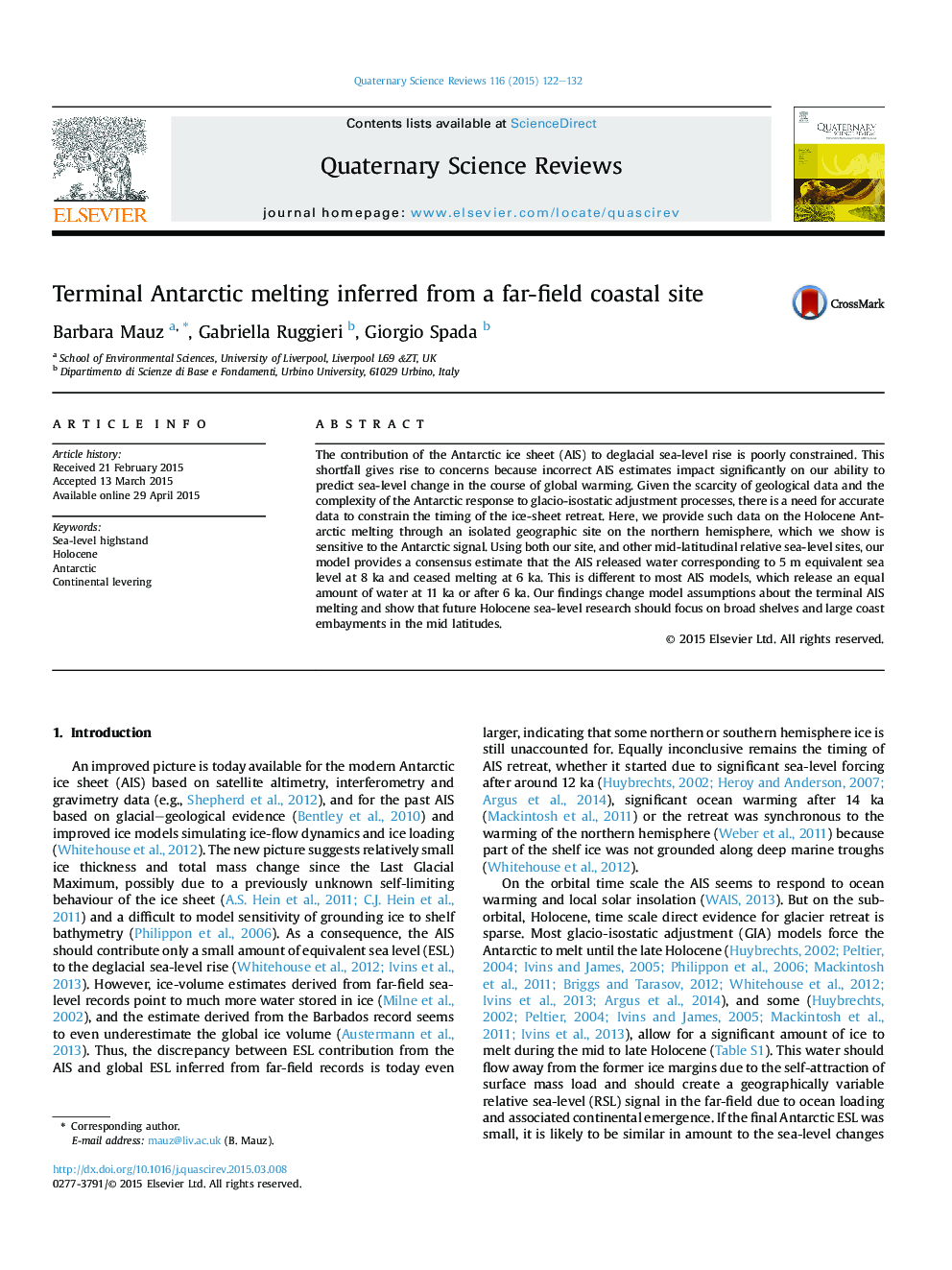| Article ID | Journal | Published Year | Pages | File Type |
|---|---|---|---|---|
| 4735312 | Quaternary Science Reviews | 2015 | 11 Pages |
The contribution of the Antarctic ice sheet (AIS) to deglacial sea-level rise is poorly constrained. This shortfall gives rise to concerns because incorrect AIS estimates impact significantly on our ability to predict sea-level change in the course of global warming. Given the scarcity of geological data and the complexity of the Antarctic response to glacio-isostatic adjustment processes, there is a need for accurate data to constrain the timing of the ice-sheet retreat. Here, we provide such data on the Holocene Antarctic melting through an isolated geographic site on the northern hemisphere, which we show is sensitive to the Antarctic signal. Using both our site, and other mid-latitudinal relative sea-level sites, our model provides a consensus estimate that the AIS released water corresponding to 5 m equivalent sea level at 8 ka and ceased melting at 6 ka. This is different to most AIS models, which release an equal amount of water at 11 ka or after 6 ka. Our findings change model assumptions about the terminal AIS melting and show that future Holocene sea-level research should focus on broad shelves and large coast embayments in the mid latitudes.
